Maurice Fells, author of local interest books including The Little Book of Bristol and Clifton History You Can See, introduces his latest work which looks at the city's unusual plaques. 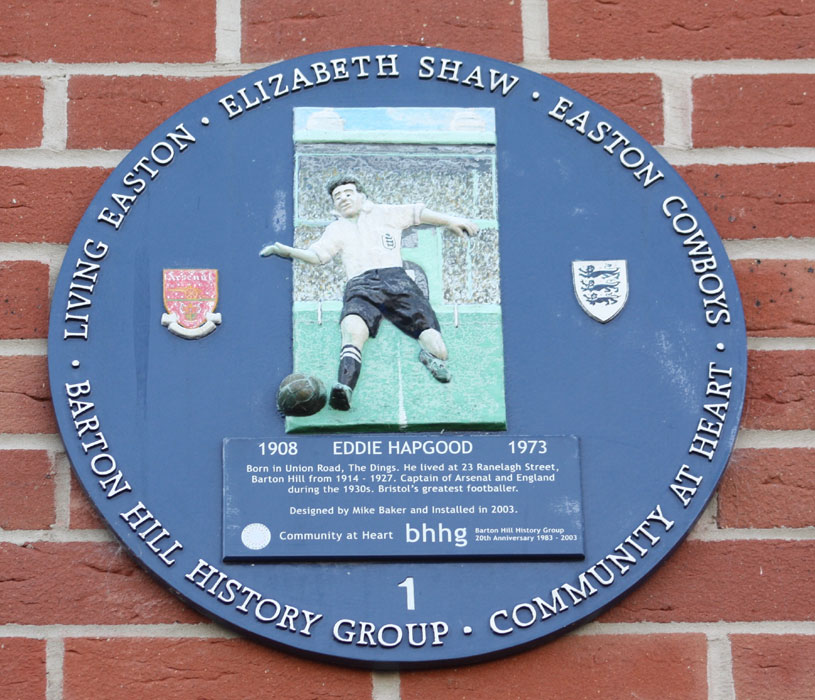
Nobody knows just how many commemorative plaques there are in Bristol. The city with its streak of quirkiness doesn't just have traditional blue plaques. There are also green, red, bronze and even multi-coloured ones erected by various local history groups.
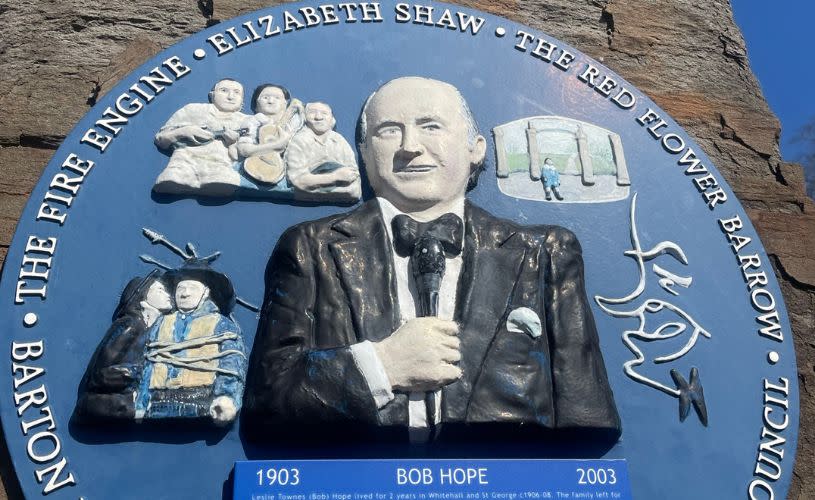
Image - Bob Hope plaque in St George
Stroll the city's streets and it’s almost impossible not to trip over a plaque. They're everywhere it seems; on houses, bridges, and former factories.
From a blue plaque noting Hollywood actor Cary Grant's first home in Horfield, to another marking famous cricketer W.G. Grace's former house in Clifton, there are reminders of Bristol's notoable past residents everywhere.
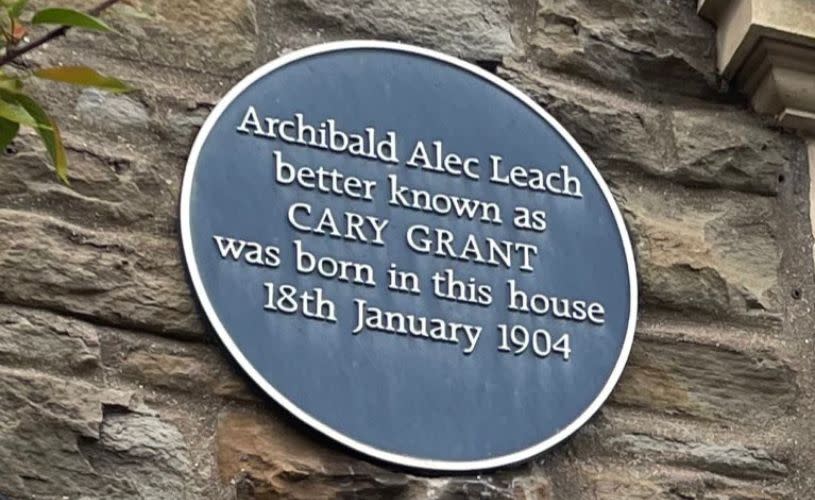
Image - Cary Grant plaque in Horfield. Credit: Kathryn Davis
It's not just academics, pioneering medics or artists who are honoured by a plaque. For example, there's a toilet attendant, a television chef and a footballer. To the passerby a single-storey green and white painted building surrounded by trees and bushes looks like a bungalow in the countryside. But it is a ladies public toilet on Clifton and Durdham Downs, 440 acres of open grassland and trees to the north of the city. A blue plaque at the entrance honours Victoria Hughes who, for three decades, was a toilet attendant there. She's quite possibly the only ‘loo attendant’, as she preferred to be known, in the country to be remembered in such a way.
Her duties included issuing tickets, cleaning the premises and selling sanitary supplies for a weekly pay packet of two pounds and two shillings. Unexpected national fame came Mrs Hughes way at the age of 80 in 1977 when she published her memoirs, called Ladies Mile. She revealed to being a confidante of sex workers who plied their trade along Ladies Mile, one of the roads crossing The Downs. In her book Mrs Hughes disclosed that she invited the women into her small office offering them tea, sympathy and advice, especially if they’d been badly treated by clients. She made notes of her conversations with the women. The inscription on her plaque, unveiled in 2003, says that Victoria “befriended and cared for prostitutes”.

Image - Public toilets on Clifton Downs
At Barton Hill in East Bristol the inscription on a three-dimensional multi-coloured plaque describes Eddie Hapgood as “Bristol’s greatest footballer”, although he’d never played for either of the city’s two professional football clubs. He did have a trial though with Bristol Rovers and was offered a contract of £8 a week but turned it down. A year later he was playing for Kettering Town in the Southern League. After just 12 appearances he was recruited by Arsenal in the Football League. Hapgood played for the London club from 1927 to 1945 making a total of 434 appearances in league and cup games.
He was in the Arsenal side that won five league titles and the FA Cup twice. Besides captaining Arsenal, he also had captained England, both in the 1930s. Hapgood's plaque is unusual for it has an image of him in action on the football pitch. On each side of him are team badges of England and Arsenal. The plaque is in Hapgood Street which is named after him.
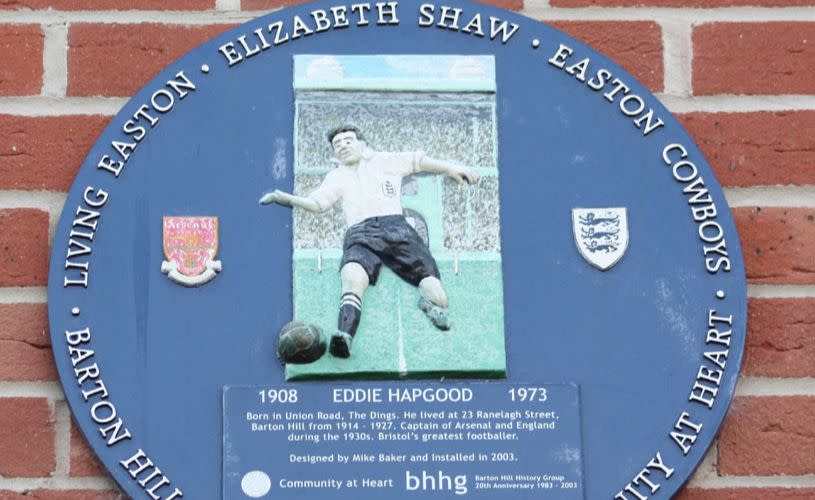
Keith Floyd would have been one of the last people to ever dream of his name appearing on a plaque. But one was unveiled outside his first restaurant a year after his death. It simply records that Floyd’s Bistro was at 112 Princess Victoria Street in Clifton, from 1969-1972.
He became a flamboyant television chef after being ‘spotted’ by a BBC producer who dined at one of his restaurants. Floyd was always seen on television wearing a bow tie and enjoying a tipple or two of wine whilst preparing and cooking food. He worked without a script and barked orders at the cameraman filming him. All this seemed to endear him to a nationwide audience. Keith Floyd died of a heart attack at the Dorset home of his partner Celia Martin in 2009 after a meal of oysters and partridge with champagne. A year later Clifton and Hotwells Improvement Society unveiled the green plaque.
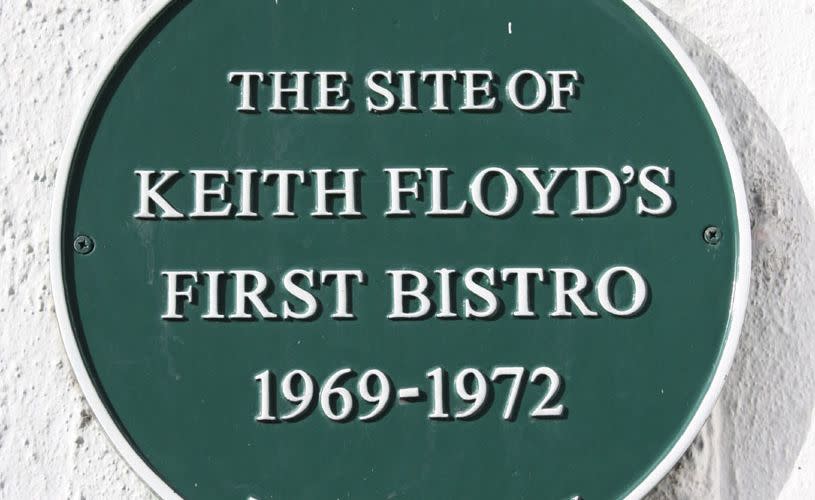
Image - Keith Floyd plaque in Clifton. Credit: Trevor Naylor
Bristol Plaques by Maurice Fells is published by The History Press.
Read more:
- See a full list of blue plaques in Bristol (Bristol City Council website)
- Learn more about Bristol history
- About Bristol
- Local itineraries





